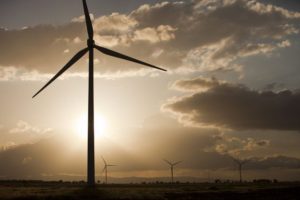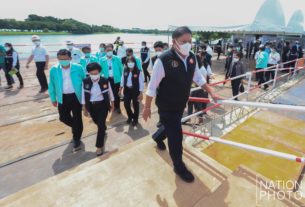 The end of the hottest season that Thailand has seen for 60 years has brought into focus many questions about the sustainability of our power sources.
The end of the hottest season that Thailand has seen for 60 years has brought into focus many questions about the sustainability of our power sources.
What if the country can’t provide enough power for its citizens? What if we run out of gas for our cars? What if the electricity goes out during “Game of Thrones?” These aren’t pretty scenarios but they are very plausible.
A report launched yesterday by the World Wildlife Fund (WWF) and its partners aims to show that 100 percent of the Mekong (Cambodia, Laos, Myanmar, Thailand and Vietnam) region’s power can be generated by renewable and sustainable energy sources such as wind, solar, geothermal and biomass by 2050.
Currently, renewable power sources make up only five percent of Thailand’s power. That five percent is mostly solar with a bit of biogas thrown in.
At a meeting today, Coconuts asked the experts for their professional opinions on what unique benefits and challenges the country might face in introducing more renewables into the country.
Dr. Decharat Sukkumnoed, of Kasetsart University, said, “Throughout the region, people want renewables and perceive them as preferable. They are even willing to paying 5-10 percent more for these energy sources.”
Jean-Philippe Denruyter, energy specialist for the Greater Mekong Programme, said that, “Thailand is running out of gas. We know this. It means that we’re looking at relying on more imports of both gas and coal, which means more dependence on countries such as Indonesia and Australia. This creates additional problems of energy securities. This is just one of the reasons that we’re looking at alternatives.”
Though he agreed that people in the region feel positive about switching to sustainable energy sources, he also noted some resistance.
“There is a disbelief among politicians in Thailand that this is possible. It’s happening in Central and Latin America, it’s happening in Africa, India and China. Why not here? There needs to be a change in attitude. It’s really important to change the mindset of some people. They need to stop believing that coal and hydro are the only solutions.”
Jean-Philippe noted that offshore wind potential has yet not been tapped in Thailand and that, though solar power dips during the rainy season, winds from the South speed up during this time and the drop in solar power can be balanced by an increase in Southern wind power.
Source: http://bangkok.coconuts.co/2016/05/25/sustainable-energy-sources-come-focus-after-hottest-season-decades


